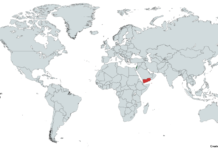The conflict between Russia and Ukraine has taken a new dimension as Russia’s jamming technology increasingly disrupts Starlink satellite internet service, crucial for Ukraine’s military communications. The service, provided by Elon Musk’s SpaceX, has been instrumental for the Ukrainian forces since the onset of the war, facilitating communication, coordination of attacks, and intelligence gathering.
Recently, members of Ukraine’s 92nd Assault Brigade experienced considerable slowdowns in Starlink’s functionality, coinciding with a surge in Russian military activities across the northern border. According to reports, the disruptions began abruptly, seriously hampering the Ukrainian military’s operational capabilities. A soldier, identified by the call sign Ajax, described the service becoming “super, super slow” just as the frontline dynamics intensified, signaling a deliberate attempt to impair their communication.
Ukraine’s Digital Minister, Mykhailo Fedorov, indicated that the deterioration in service was due to Russia testing new, more advanced jamming techniques aimed at disrupting the Starlink connections. This development suggests a tactical shift by the Russian forces, focusing on electronic warfare to neutralize one of Ukraine’s key technological advantages. Fedorov mentioned that discussions with SpaceX are ongoing to address and mitigate these outages.
Experts in electronic warfare have noted that Starlink’s satellites, operating at lower altitudes compared to traditional geostationary satellites, generally offer more robust signal strength and reduced latency, which enhances communication speeds. However, the recent incidents suggest that Russia has developed more potent and precise jamming tools capable of affecting these signals. This escalation in electronic warfare tactics marks a critical challenge for the Ukrainian forces, relying heavily on this satellite internet service for real-time strategic operations.
The impact of these disruptions was particularly evident during a recent Russian offensive near Kharkiv, Ukraine’s second-largest city. The Ukrainian forces found themselves at a substantial disadvantage without reliable communication, as narrated by a drone pilot using the call sign Kartel. The pilot recounted instances where the need for swift movement and coordination was critically hampered by the slow communication, forcing the troops to resort to less efficient text messaging apps.
The Russian Ministry of Defense has not officially commented on these specific jamming activities. However, an official from Russia’s electronic warfare division was quoted in state media earlier, indicating that military strategies had been adjusted to include countermeasures against Starlink, treating it as a strategic target.
These developments bring into focus a broader issue in modern warfare where communication technology becomes a prime target, highlighting the dependency on digital infrastructure in conflict scenarios. The ongoing jamming of Starlink not only affects military operations but also raises questions about the security and reliability of satellite communications in contested environments.
This situation puts additional pressure on SpaceX and international allies supporting Ukraine to find rapid solutions to these new challenges. It also illustrates the dynamic nature of modern conflicts, where advancements in technology and counter-technology continuously evolve, shaping the course of engagements. As the war progresses, both the tactical use of technology and countermeasures against it will undoubtedly continue to play a pivotal role in determining the operational capabilities and success of the involved parties.









